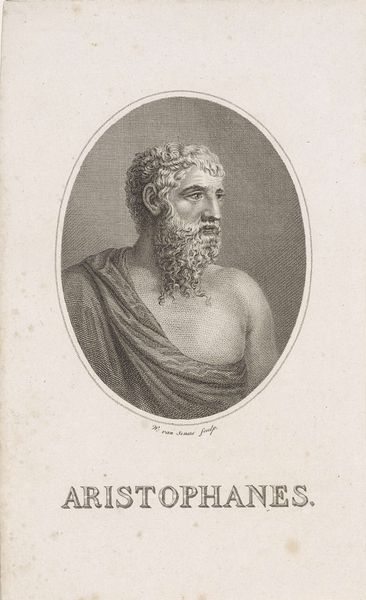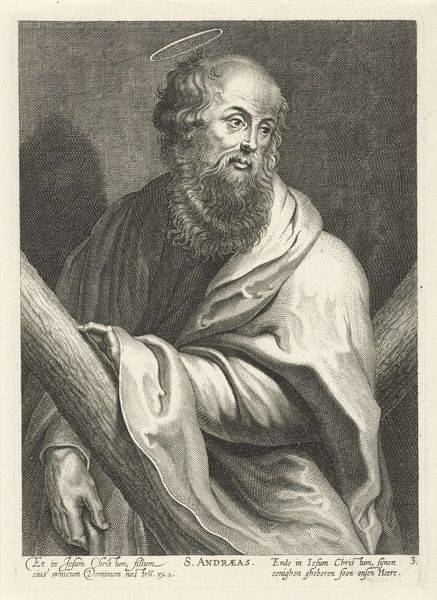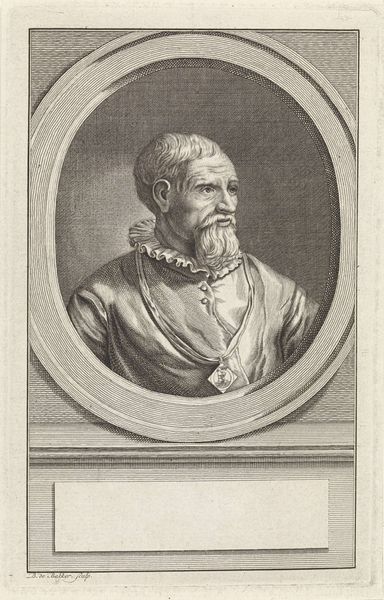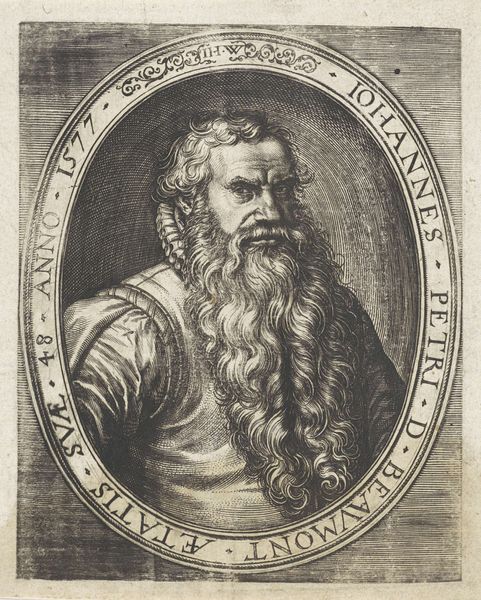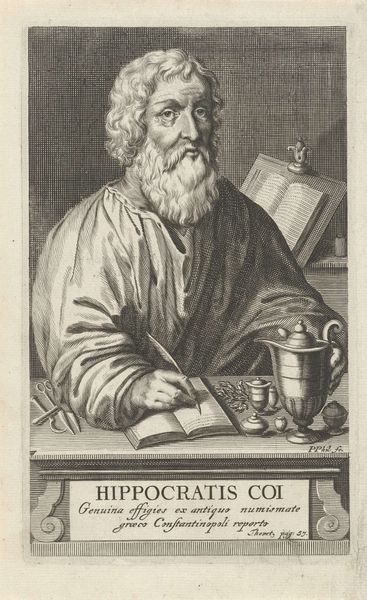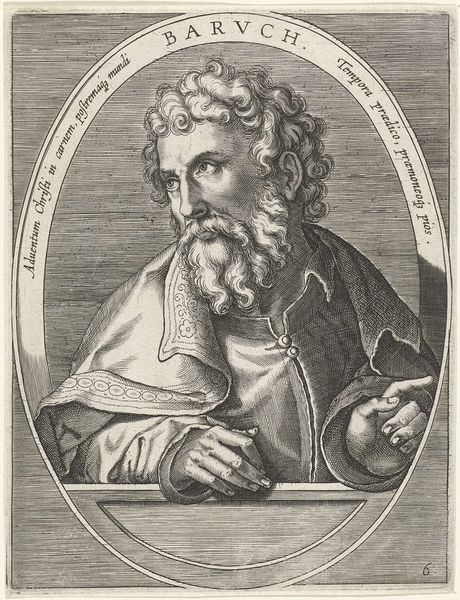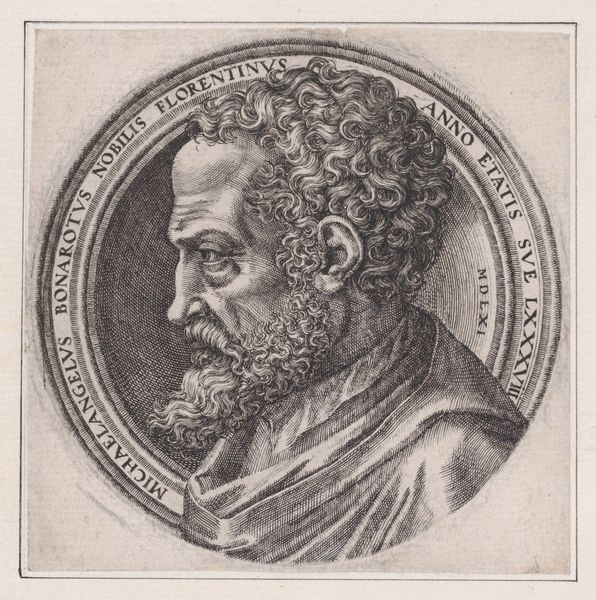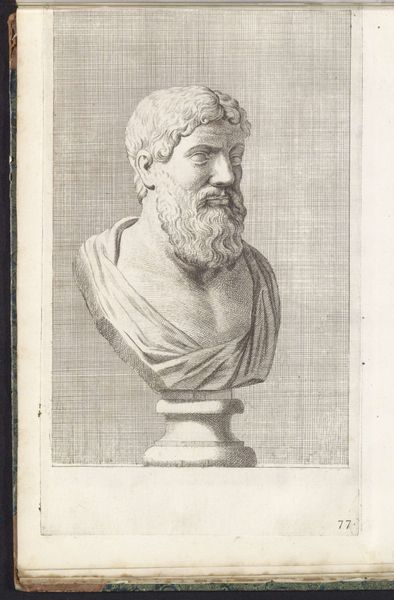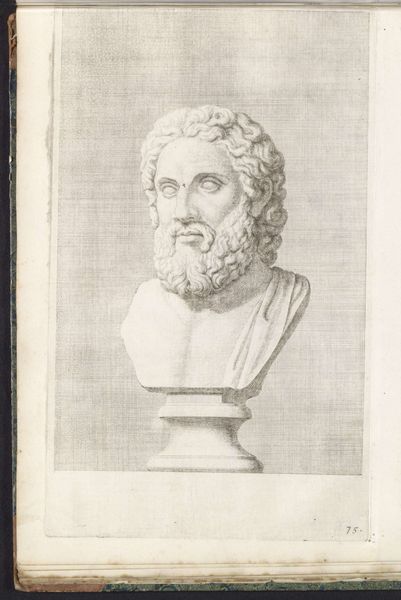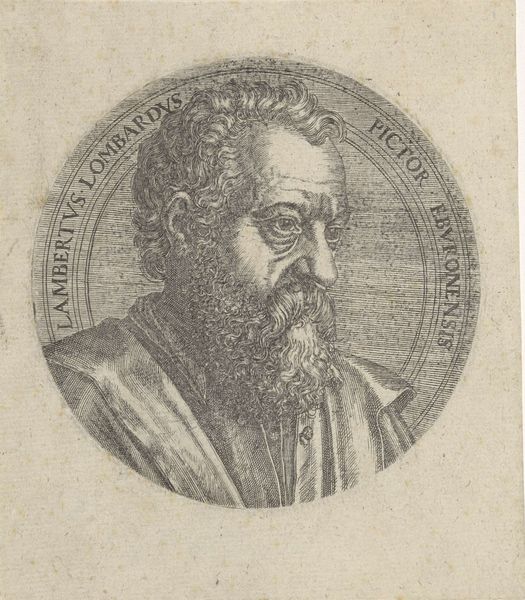
print, paper, engraving
#
portrait
#
pencil drawn
# print
#
greek-and-roman-art
#
old engraving style
#
paper
#
pencil drawing
#
engraving
#
realism
Dimensions: height 220 mm, width 135 mm
Copyright: Rijks Museum: Open Domain
Editor: Here we have Willem van Senus' "Portret van Socrates," an engraving on paper created sometime between 1783 and 1851, residing here at the Rijksmuseum. It's struck me with its... timeless simplicity. What can you tell us about this piece? Curator: Well, at first glance, it seems like a straightforward portrait. But let's think about why someone in the late 18th or early 19th century would choose to depict Socrates. The Enlightenment, with its emphasis on reason and classical ideals, was in full swing. How does situating it in that time period inform its possible reception? Editor: I see. So, it’s not just a portrait, but a statement? Was it common to reference ancient figures to legitimize certain ideologies or philosophies? Curator: Absolutely. Reproducing images of classical philosophers served a specific public role. Consider how this image might circulate: was it intended for books, broadsides, or prints to be displayed in homes? Who was the intended audience and how did they engage with visual culture? This would then have a huge impact on the type of messages that they would have understood through these classical allegories. Editor: Interesting! So the print functions less as an aesthetic object, and more as a... cultural tool to advocate Enlightenment thinking? Curator: Exactly! The choice of Socrates, known for his critical questioning and independent thought, carries a clear message within a specific social and political context. What does the figure symbolize at the time? And how does the engraving process itself, as a reproducible medium, reinforce that message? Editor: I never considered how the medium itself adds to the work’s meaning! The print is not just a picture of Socrates; it’s an endorsement, spreadable, reinforcing the values that the Enlightenment championed. Thanks, this helps me see it on so many more levels! Curator: My pleasure! There are still several research possibilities. Always try to look at it within its particular cultural moment to realize the message it carries and disseminates!
Comments
No comments
Be the first to comment and join the conversation on the ultimate creative platform.
